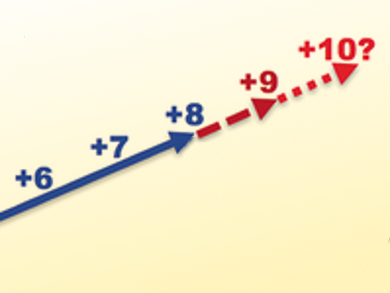Oxidation States
The oxidation state used to seem such a simple matter, at least in Lavoisier’s time—it was a number used to represent how much oxygen had combined with another element in a compound. When electric charges were introduced into chemical theory and bonded oxygen was interpreted as O2–, the oxidation number was more fundamentally defined not as the number of oxygen atoms gained but as the number of electrons lost from an element in a compound in an oxidation reaction. In a theoretical sense, it is the charge that an atom would have if somehow all of the bonds it has to other atoms in a compound could be considered to be wholly ionic. Counting charges means that the oxidation number is meaningful even in reactions that do not involve the element oxygen.
The oxidation state, or rather, oxidation number, can be positive, zero, or negative. Today, we even talk of fractional or averaged oxidation states in complex structures. For example, the oxidation number of iron in magnetite (Fe3O4) is calculated as 8/3. There are three iron atoms bonded to four oxygen atoms. If all the bonds between them were equal and 100 % ionic, there would be eight negative charges across the four oxygen atoms that would be countered by the positive charges on three iron atoms, hence 8/3.
The concept of oxidation state is useful for keeping track of the electrons, predicting chemical trends, and guiding syntheses.
Record-Breaking Oxidation Numbers
Many chemical endeavors have looked for complex oxidation states and even sought record-breaking states, such as the +9 oxidation number in the iridium tetroxide cation with its single positive charge. That species was generated in 2014 using gas phase pulsed-laser vaporization [1]. There are even hints that chemists might be able to access a +10 oxidation number in the tetroxide dication of platinum metal. There was controversy over the calculated oxidation states in titanium dioxide recently, wherein some chemists argued it was best described as having the metal ion in the +3 state and the oxygen atoms each existing in a –1.5 oxidation state [2].
The oxidation number is a purely hypothetical construct in the strictest sense. There is no question of our ever really seeing an Ir9+ or a Pt10+ ion in a normal chemical reaction, the ionization energies required are simply too high. However, as a formalism, it is a useful tool for balancing the chemical books and understanding the nature of reactions. In the absence of a solid, usable definition, the International Union of Pure & Applied Chemistry (IUPAC), custodian of chemical definitions, has recently formalized the nature of oxidation state that involves the approximation of chemical bonds [3].
Upper Limits
Eugen Schwarz, Universität Siegen, Germany, and colleagues found in a joint theoretical–experimental case study of PtO42+ isomers that there is a putative limit close to +8 for the highest oxidation state in a stable, neutral chemical substance under ambient conditions. All efforts to synthesize a solid or solute salt of the above mentioned [IrO4]+ have failed so far. Obviously, the aforementioned iridium and platinum ions are not neutral. The researchers wonder whether higher oxidation numbers might well be possible and look to the recent IUPAC “algorithm” for calculating oxidation state, which can be interpreted as: “Draw a reasonable Lewis (resonance) structure with one- and two-center electron pairs, then assign the two-center pairs as localized at the more electronegative atoms”.
The highest oxidation state of an element is usually limited by the maximum number of valence electrons, the team says. This is typically the group number in the periodic table. Nudging chemistry to higher oxidation states might be possible, but, as the team suggests, “[Such] predictions can be stimulating for preparative chemistry, where they inspire new synthetic approaches, for conceptual chemistry, where they help to understand periodic trends, and for characterizing non-Lewis structures, where they widen our conceptions of chemical bonding.”
- On the Upper Limits of Oxidation States in Chemistry,
Shu-Xian Hu, Wan-Lu Li, Jun-Bo Lu, Junwei Lucas Bao, Haoyu S. Yu, Donald G. Truhlar, John K. Gibson, Joaquim Marçalo, Mingfei Zhou, Sebastian Riedel, W. H. Eugen Schwarz, Jun Li,
Angew. Chem. Int. Ed. 2018.
https://doi.org/10.1002/anie.201711450
References
- [1] Identification of an iridium-containing compound with a formal oxidation state of IX,
Guanjun Wang, Mingfei Zhou, James T. Goettel, Gary J. Schrobilgen, Jing Su, Jun Li, Tobias Schlöder, Sebastian Riedel,
Nature 2014, 514, 475–477.
https://doi.org/10.1038/nature13795 - [2] On the Charge State of Titanium in Titanium Dioxide,
Daniel Koch, Sergei Manzhos,
J. Phys. Chem. Lett. 2017, 8, 1593–1598.
https://doi.org/10.1021/acs.jpclett.7b00313 - [3] Comprehensive definition of oxidation state,
Pavel Karen, Patrick McArdle, Josef Takats,
Pure Appl. Chem. 2016.
https://doi.org/10.1515/pac-2015-1204




